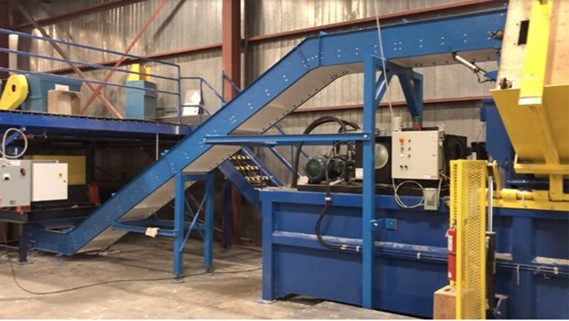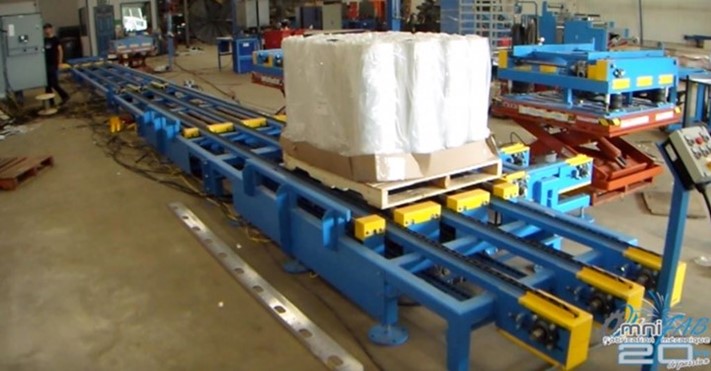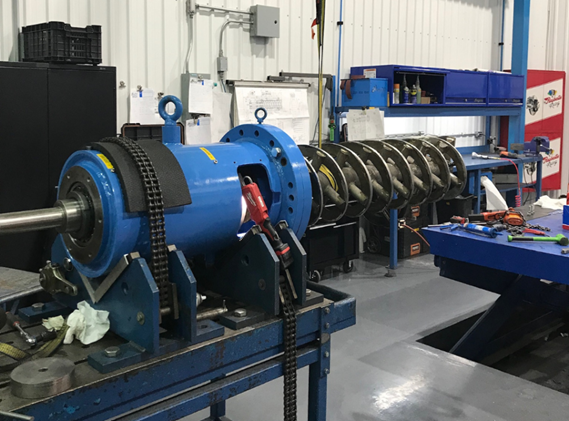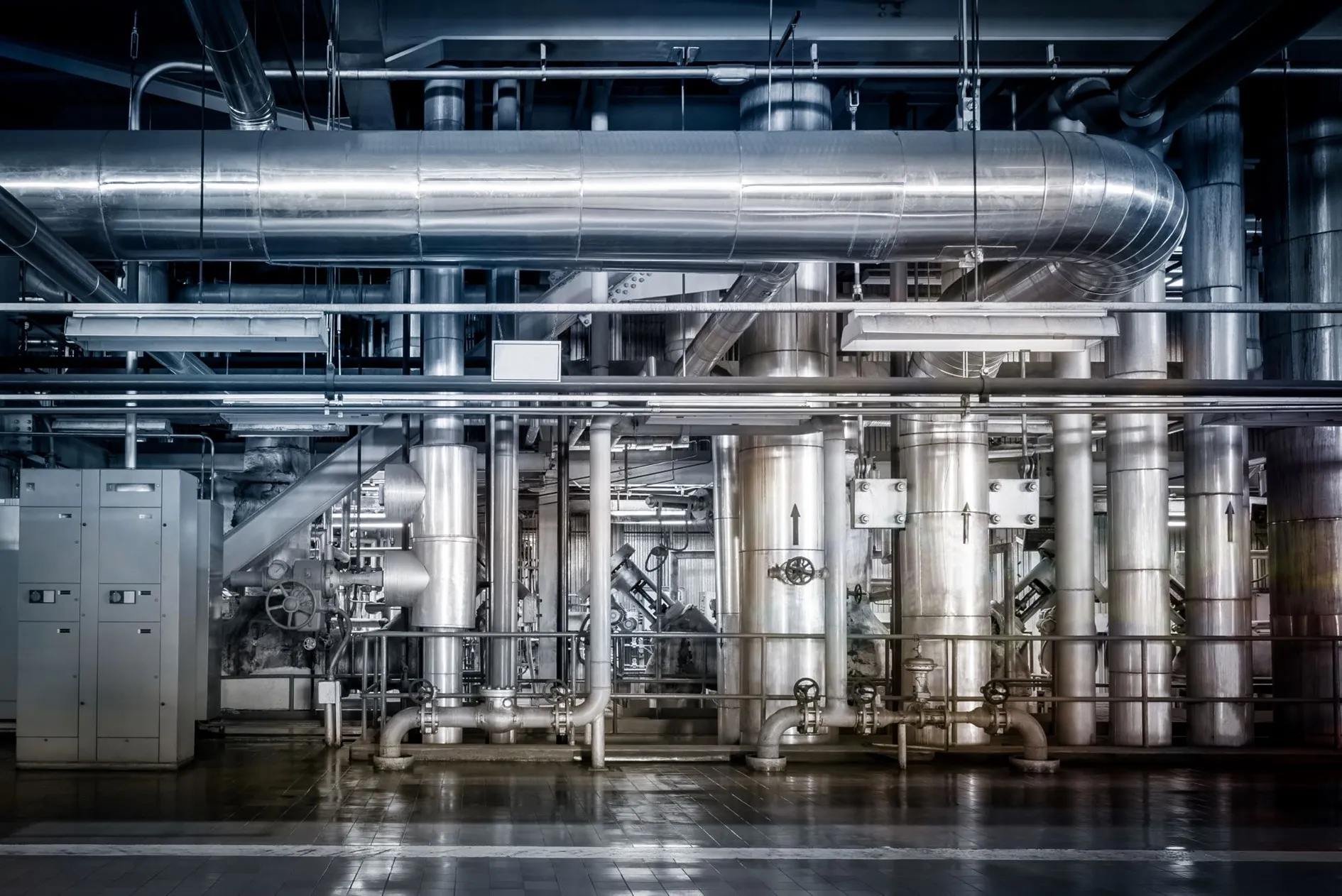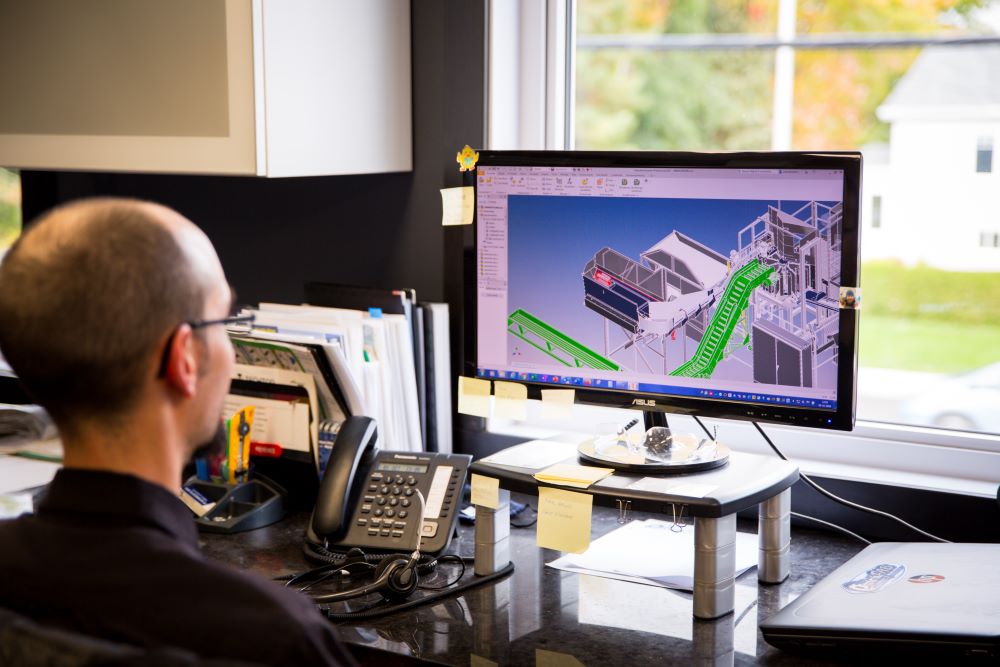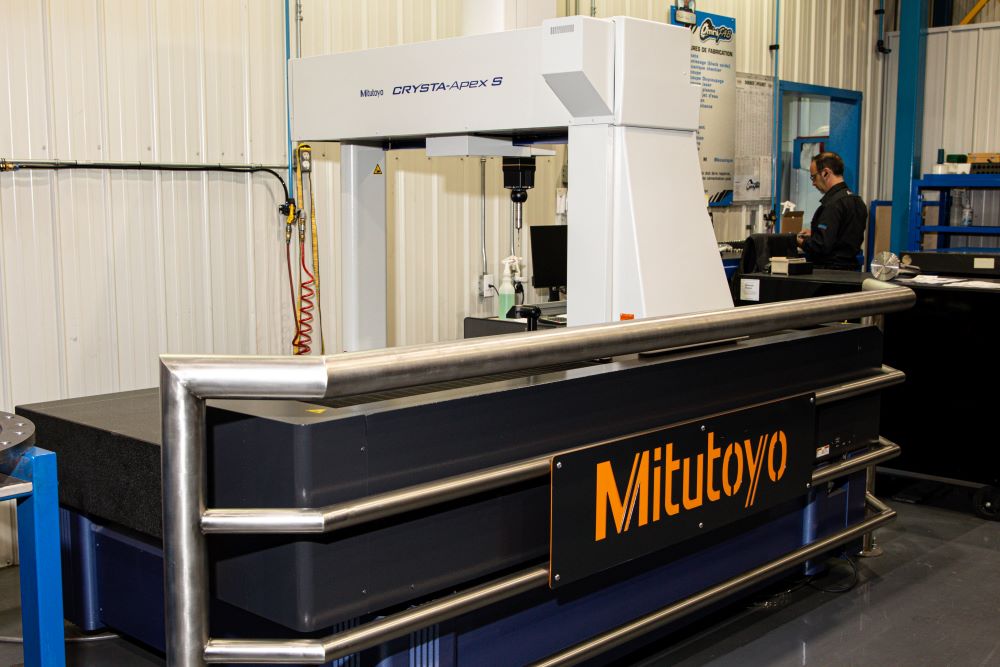At Omnifab, conveyors design, production, installation, repair and maintenance are among our most requested skills by our clients.
For the industry businesses, it is important to know that these equipments can rely on different drive modes to transport products or goods from point A to point B.
All these different types of industrial conveyors have unique features, making them more or less suitable for handling certain products (bulk foods, liquids, crates, chemicals, aggregates, etc.).
In this article, discover the features and applications of 5 different types of conveyor.
- Belt conveyors
- Roller conveyors
- Chain conveyor
- Screw conveyors
- Vibratory conveyors
But just before we get to the heart of the matter, let’s review together the different characteristics of Omnifab’s conveyors design and production service.
Conveyors design and production at Omnifab
At Omnifab, we have always preferred to work on custom conveyor projects, in other words, conveyors that are tailor-made for a particular customer application. That’s why we see ourselves more as specialists in customized handling systems.
That’s why we don’t keep « standard » coveyors in stock and that the mandates we carry out all include an engineering phase that precedes manufacturing and installation.
In short, we’re the ideal partner if none of the coveyors available on the market meet fulfill your needs. Ours can integrate all the automation functions you’re looking for to optimize your production.
Our custom made conveyors are efficient, strong and safe
The fact that our own engineers design our conveyors ensures that they always meet all the specifications and standards governing our customers’ industries. For example, our conveyors always comply with CSA-Z432 safety standards.
In addition, since we also manufacture and assemble many of our conveyor components in-house, we can carry out as many quality tests as required. When it comes to installing our conveyors, our external industrial mechanics team comes to take care of it.
Our delivery times are the fastest, period!
The clients who trust us with their custom made conveyor projects are assured to be able using their conveyor six weeks, or less, after confirming their order.
Rare exceptions to help out our clients
You need a standard conveyor, but no supplier can offer you a fast enough lead time?
In this situation, we can make an exception and deliver your conveyor production and installation inside a record-breaking time!
Now, let’s go back to our sheeps and take a look at the most common types of indutrial conveyor.
Do you need a conveyor perfectly suited to your needs?
1 – Belt conveyors (also known as conveyor belts)
Probably the most common material handling system, the belt conveyor has found its way into almost every sector of industry.
This system consists of at least two pulleys and a closed circuit (the conveyor belt) running around them. One or more of the system’s pulleys can be motorized, enabling the belt to be moved in the right direction.
Generally, there are two main types of belt conveyors:
– For general materials (boxes, packets, bags, solid articles or products, etc.)
– For bulk materials (grain, salt, sand, ore, coal, etc.).
Belt systems are manufactured in a wide variety of materials and are used in many different applications, not just in an industrial setting. You’ll find them at airports, for baggage handling, and on vehicles used to spread lime and other aggregates.
A belt conveyor can be closed to avoid contamination and material loss, but it can also be open if it’s part of an assembly line. They are a good choice for transporting heavier loads.
A good example is the modular belt conveyor used to feed a baler :
2 – The roller conveyor
The roller conveyor is one of the simplest types of conveyor. A series of rollers mounted on a side frame form the running surface.
When movable rollers are mounted on a declining angle, the items move on their own. When designing such gravity conveyors, the size and weight of the goods to be transported must be taken into account to determine the appropriate gradient.
There are also motorized roller conveyors. These types of conveyors generally use one or more electric motors to generate the right rotational movement to direct the goods to the desired location.
Omnifab is a reference in the design of customized roller conveyors.
3 – The chains conveyor
As their name suggests, chain conveyors use a chain to initiate a movement used to transport materials. The chain runs over gears at each end of the line, and can be fitted with special accessories.
Chain conveyors are thus characterized by the number of chains they comprise and the material from which they are made. The robustness of the supporting frame, often mechanically welded, is another feature of these handling systems.
The most common application for chain conveyors is the movement of heavy loads, in other words bulky, wide materials such as industrial containers and pallets.
When it comes to maintenance, individual links can be replaced rather than the whole chain. However, chains are not easy to clean, and their gears need to be replaced regularly.
As with the previous types of conveyor, Omnifab is able to create chain conveyors that incorporate various automated functions enabling companies to increase production.
We also have the expertise to manufacture robust chain conveyor frames that promote safety in the workplace.
4 – The feeder screw conveyor
One of the first types of conveyor to be invented, screw conveyors have been around since antiquity. For instance, the Archimedes screw, based on the same physical principle, was created in ancient Greece.
The mechanism of this system consists of a helical blade (endless screw, worm or auger) which moves liquid or granular material, usually inside a tube. The speed at which the material is transferred is directly proportional to the rotation speed of the screw.
Screw conveyors are a good choice for semi-solid materials, such as :
– Aggregates
– Bulk grains
– Wood chips
– Meat
– Boiler ash
– etc.
The benefits of this conveying system include the fact that screw conveyors have few moving parts, and are easy to maintain and clean.
If you think your business could benefit from a unique screw conveyor, our team of engineers may be able to develop one just for you!
5 – The vibrating conveyor
Generally speaking, vibratory conveyors consist of a metal plate that vibrates at a low amplitude but high frequency. Under the effect of this vibration, materials are carried to their destination.
These conveyors are particularly useful in sorting and screening applications.
Our team regularly works with sorting centers, which has led us to develop expertise in the automated equipment used in these facilities, such as vibratory conveyors.
Omnifab is the reference for industrial conveyors in Quebec
In conclusion, there is no doubt different types of conveyors could help you optimize your industrial operations.
At Omnifab, we can help you identify which one, and even custom-design one to meet your specific requirements. Our material handling systems can integrate a host of features you need to boost productivity, ensure employee safety and overcome labor shortages.
In addition, we can also take care of the upkeep and maintenance of different types of industrial conveyors to prevent unplanned downtime.
In short, our engineers, machinists, welders and industrial mechanics all have extensive conveyor expertise, and they’re just waiting for your signal to share it with you.

